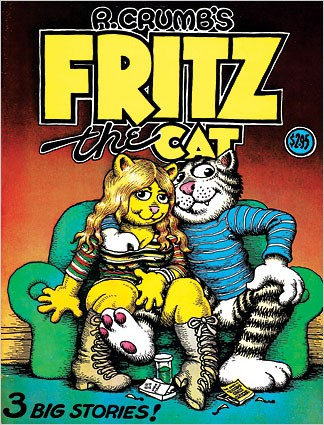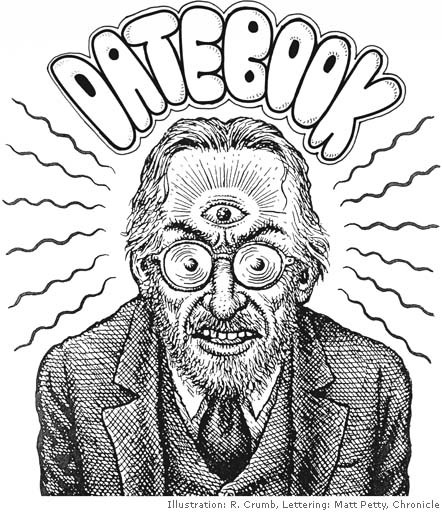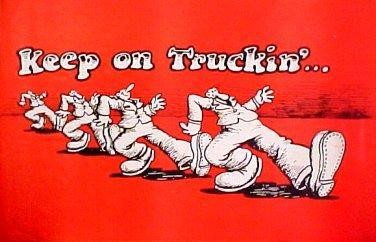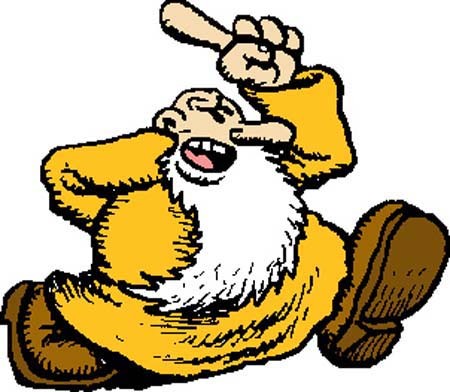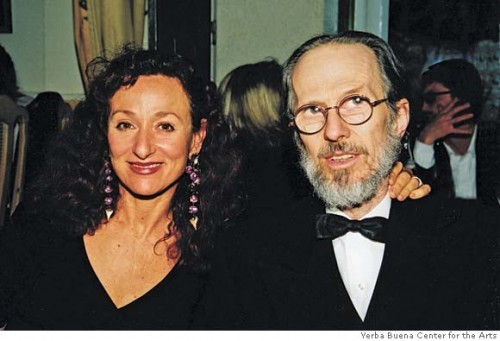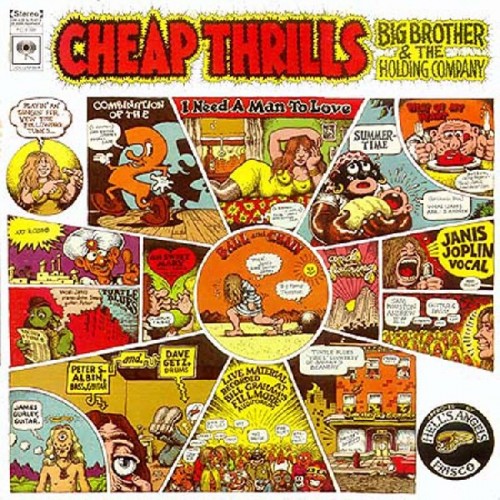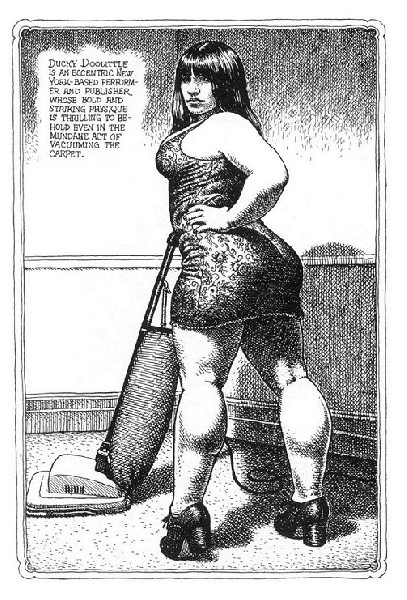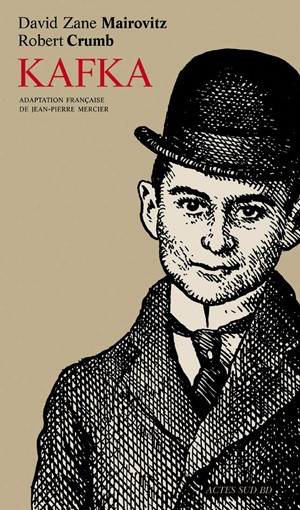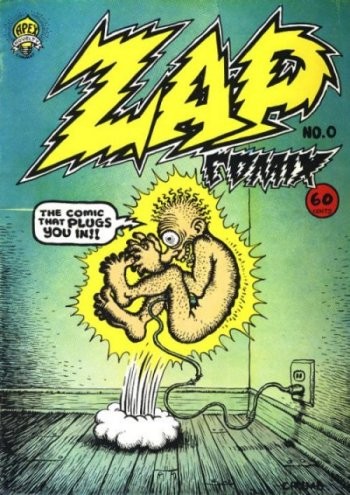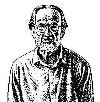R. Crumb Exhibit At Mass Art and Design
Underground Comics Cult Cartoonist Shines
By: Mark Favermann - Feb 02, 2009
Crumb's Underground
An Exhibit of Works by Robert Crumb
Organized by the Yerba Buena Center for the Arts, San Francisco
Curated by Todd Hignite
February 2 through March 7, 2009

In the Stephen D. Paine Gallery

The Massachusetts College of Art and Design
821 Huntington Avenue
Boston, MA 02215
617-879-7000
Currently, at the Massachusetts College of Art is an exhibition of 150 original drawings, comic book pages, posters and covers by one of the most eccentric and beloved illustrators of the last 50 years, Robert Crumb. The show is taken from two extensive private collections of Crumb's art dating from the late 50's to the past decade (2005). His work is distinctive, energetic, even frenetic, often perverse. To some it will be repugnant, but there is also a fascinating universal appeal. R. Crumb's work reflects his own hyperventilating id, his instinctual impulses, resulting in depictions of perversity, pornography and somehow human empathy. There is a darkly rendered but amusing everyman in all of his pieces. He is a strange post-modern master. He has also become a cultural icon.
For those old enough to remember the 60's and 70's, the work of Crumb evokes period memory. His satirical but subversive drawings, comics and cartoons illustrated the times. His comic book creations Mr. Natural, Fritz the Cat, and Angelfood McSpade were much more perverse and real characters that replaced the Mickey, Donald and Goofy of our childhoods as we grew into adolescence, smoked weed and/or dropped acid (LSD), or at least talked about doing so. There was a lot of raw, visually explicit, at times even scatological and occasionally shocking sex in his work.
The comics had very subversive names like Zap, Snatch, Bigass, Uneeda, Bijou, Mr. Natural, Head Comix. Often the hero or antihero of the comic was Crumb himself. He was always self-effacing and paranoid. Crumb depicting a Crumb-like protagonist was shy, weird and sexually longing, much like any adolescent or delayed adolescence. Freudians could have a field day with his panoply of nubile depictions of large legged, broad hipped and big butt women. These often mysterious lovelies were always juxtaposed with skinny, nerdy types (the Crumb character) that eventually were either destroyed by them or got to be with them deliriously happy and sexually sated in the end. Of course, this was almost every adolescent boy's and Crumb's own fears, fantasies and dreams. Voyeurism was the best revenge.
To many, Crumb was some sort of mysterious genius living in San Francisco and producing a stream of what was then called underground comics. These comics went way beyond the earlier subversive publications, MAD Magazine, that first parodied American culture, advertising and entertainment in a totally insubordinate way starting in the 1950's. In reality, Robert Crumb was an eccentric, nerdy guy who liked to draw. Boy can he draw. He is a true genius, but not a romantic or a very mysterious one.
Robert Crumb was born in Philadelphia in 1943 to a totally disfunctional family depicted in the Terry Zwigoff 1994 documentary Crumb. He got a job in the 60's in Cleveland at American Greetings Corporation where he designed greeting cards for many years. It was during that time that he began to develop his eventual style. He is a true founder and pioneer in the underground comics movement. In Cleveland, he met, befriended and illustrated some of the equally eccentric Harvey Picard's American Splendor comics as well.
Encouraged by having some of his drawings published in Philadelphia's alternative paper, Yarrowstalks, Crumb moved to San Francisco, the center of the counterculture in 1967. He sold his comics on the streets of Haight-Ashbury. Crumb maintained complete control of his art, distribution and sales. He eventually invited other artists to develop comics as well. Most of his early work was autobiographical and psychologically revealing. Sex, drugs and rock and roll were always in the satirical, perverse and seditious mix.
Though celebrated for his comic books, his real mainstream fame came from having illustrated the album covers for megahits Cheap Thrills (shown in this current exhibit) for Janis Joplin's Big Brother and the Holding Company and the Grateful Dead's compilation album The Music Never Stoped: Roots. With these albums, mainstream America had access to a Crumb drawing/print of their own.
Crumb's early character, Fritz the Cat, was bought by Ralph Bakshi and made into the first "adult" cartoon. Crumb was not happy with the eventual product and felt ripped off. His graphic work permeated American culture in odd ways. The comic image and slogan Keep on Truckin developed into a visual and vocal mantra of pop culture. This was so pervasive that even mainstream Teamsters adopted this as part of their own ethos. A Keep on Truckin poster is included in this provocative and expressive Mass Art exhibition.
Now in his 60's, Crumb lives in the South of France in a house he traded for drawings, paintings and other pieces of his art. He lives with his second wife Aline Kominsky-Crumb, a cartoonist/artist herself. His children are also artists. Some of his later work includes a wonderful cover for the New Yorker on display in this exhibit, an illustrated biography of Franz Kafka in collaboration with David Zane Mairowitz and a longtime ongoing project of illustrating the first book of the Bible, Genesis.
Considering his creative roots, Robert Crumb is now almost unbelievably an American master. Looking at his early work transports us to a simpler, strangely less cynical time when we started to ask why about the world, who we were and who we were going to be. His later work is more accepting of our/his place in society and own vulnerability. His influence can be seen in today's graphic novels, independent films and stand-up comedy. Though often dissident, satirical and perverse, Crumb's best work like any work of a great draftsman has a unique transcendent beauty, a warmth of line and light from within.

